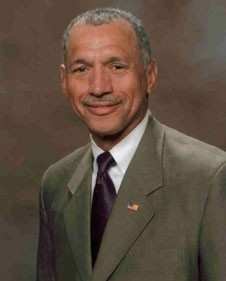Cornell Professor's Credentials Span 20 Years Of Aerospace
Experience
NASA Administrator Charles Bolden (pictured) has named
Cornell University Professor Mason Peck to be the agency's chief
technologist, effective in January. Peck will serve as the
agency’s principal advisor and advocate on matters concerning
technology policy and programs.

As the chief advocate, Peck will help communicate how NASA
technologies benefit space missions and the day-to-day lives of
Americans. The office coordinates, tracks and integrates technology
investments across the agency and works to infuse innovative
discoveries into future missions. The office also documents,
demonstrates and communicates the societal impact of NASA's
technology investments.
In addition, the chief technologist leads NASA technology
transfer and technology commercialization efforts, facilitating
internal creativity and innovation, and works directly with other
government agencies, the commercial aerospace community and
academia.
"Mason's lifelong commitment to learning and expertise in
aerospace engineering makes him ideally suited to advise and help
guide the agency toward the technologies and innovations that will
enable our future missions," Bolden said. "His passion for
education and his accomplishments in spacecraft design and
robotics, along with his experience in the private sector, bring
the skills I've come to depend on from my chief technologist."
Peck will serve as NASA's chief technologist through an
intergovernmental personnel agreement with Cornell University,
where he is on the faculty as an associate professor in the School
of Mechanical and Aerospace Engineering. He also teaches in
Cornell's Systems Engineering Program. Peck succeeds Robert Braun,
who returned to his teaching and research positions at the Georgia
Institute of Technology in Atlanta.
Peck has a broad background in aerospace technology, which comes
from nearly 20 years in industry and academia. He has worked with
NASA as an engineer on a variety of technology programs, including
the Tracking and Data Relay Satellite System and Geostationary
Operational Environmental Satellites. The NASA Institute for
Advanced Concepts sponsored his academic research in modular
spacecraft architectures and propellant-less propulsion, and the
International Space Station currently hosts his research
group’s flight experiment in microchip-size spacecraft.
As an engineer and consultant in the aerospace industry, he has
worked with organizations including Boeing, Honeywell, Northrop
Grumman, Goodrich and Lockheed Martin. He has authored 82 academic
articles and holds 17 patents in the U.S. and European Union.

Peck spent some of his early career at Bell Helicopter, where he
worked on the V-22 Osprey and a smaller tilt-rotor aircraft that
later would become the BA609. He also has experience with
commercial communications satellites and military spacecraft as a
guidance and control engineer and in mission operations at Boeing
Defense, Space and Security. He was a principal fellow at Honeywell
Defense and Space Electronic Systems, where he led
advanced-technology programs, helped direct patent and
intellectual-property investments, and worked in business
development.
At Cornell, Peck's work focuses on spacecraft dynamics, control
and mission architectures. The Defense Advanced Research Projects
Agency, the U.S. Air Force Office of Scientific Research, and
aerospace contractors have funded his academic research. Some of
this research includes microscale flight dynamics, gyroscopic
robotics, and magnetically controlled spacecraft, most of which
have been demonstrated on NASA microgravity flights.
He currently is the principal investigator on the CUSat in-orbit
inspection technology demonstration, which is a pair of satellites
built at Cornell. They are scheduled to launch in 2013 on a Falcon
9 rocket through the U.S. Air Force Research Laboratory's
University Nanosatellite Program. CUSat technology represents a
capability that will help enable commercial, government and human
space missions envisioned for the coming decades.
Peck also is the principal investigator for the Violet
experiment, another satellite built at Cornell. Violet will provide
an orbiting test bed for investigations in technology that will
enable more capable commercial earth-imaging satellites. Violet
carries an ultraviolet spectrometer that will be used as a
precursor to understanding exoplanet atmospheres.
Peck earned a doctorate in aerospace engineering from the
University of California, Los Angeles as a Howard Hughes Fellow and
a master's degree in English literature from the University of
Chicago. For more information about NASA's Office of the Chief
Technologist, visit:
 Classic Aero-TV: The Switchblade Flying Car FLIES!
Classic Aero-TV: The Switchblade Flying Car FLIES! ANN FAQ: Q&A 101
ANN FAQ: Q&A 101 ANN's Daily Aero-Term (04.12.24): Discrete Code
ANN's Daily Aero-Term (04.12.24): Discrete Code ANN's Daily Aero-Term (04.13.24): Beyond Visual Line Of Sight (BVLOS)
ANN's Daily Aero-Term (04.13.24): Beyond Visual Line Of Sight (BVLOS) ANN's Daily Aero-Linx (04.13.24)
ANN's Daily Aero-Linx (04.13.24)




